
Wine Culture and Information since 2002 - Volume 22
 Wine Culture and Information since 2002 - Volume 22 |
|
Issue 103, January 2012 |
Contents |
|
|
On Glasses and Bubbles |
|
If there is a wine of which has been widely debated on the the type of glass to be used for its best appreciation, this certainly is sparkling wine. Any sparkling wine, from the most simple and immediate ones produced with the Charmat method, to the most complex and robust ones, fruit of the classic method, refermented and aged in bottle for many years. The debate on the right glass for the appreciation of bubbles begins after the colossal commercial success originating from the Champagne region after the second half of 1600s. Wines with bubbles, of bruschi wines - this is how in Italy they called them in past centuries, not truly sparkling wines in the sense we consider them today, but however effervescent - were known long before the famous event happened in the Abbey of Hautvillers and that, the legend goes, has in the Benedictine monk Dom Pierre Pérignon its main protagonist. The great commercial success made bubbles immortal and indissolubly associated to great and luxury special occasions. A product for the élite like this, inevitably required the use of luxury and expensive glasses, most of the times a mere showing off of useless pomp. Decorated glasses, frequently embellished with pure gold, golden stems, even made of pewter, silver or platinum, first quality crystal, have always been common characteristics of glasses in which the precious bubbles were being poured in. It seemed organoleptic and sensorial issues were not something looked for in a glass destined for the consumption of bubbles, indeed, it seemed they were looking for just one quality: emphasizing luxury and richness of the occasion, in order to impress one's own guests. We do not have reliable information in this sense, it is however likely in these “social contexts” not so many were interested to the organoleptic qualities of wines, indeed they seemed to focus on the prestige of a label, the value of a glass and the meaning associated to them. I am not saying in these contexts were appreciated bad quality wines: history taught us the very best wines were exclusively destined to the table of the rich. The only sensorial quality to which they seemed to be particularly fond of in sparkling wines - Champagne, in particular - were bubbles. Maybe it was because they are typical in this wine style only, or because they have always been defined - in poetic terms - as “pearls”, an object associated to luxury and richness. In other words, the pearl metaphor becoming bubbles in a glass had the primary goal of emphasizing the status of wine for the élite. The first glass to be associated to Champagne has certainly been the coupe. This type of glass has always been subject of legends, not only about its supposed creation, but also about its use. The most famous one is about its creation. The legend goes the famous coupe has been modeled on the breast of at least three French gentlewomen of the past. Marie Antoinette - the famous Archduchess of Austria who then became Queen of France and of Navarre - Joséphine de Beauharnais, first wife of Napoléon Bonaparte and, finally, Jeanne Antoinette Poisson, Marquise de Pompadour, better known as Madame de Pompadour as well as lover of the French King Louis XV. These three gentlewomen of the past have not been the only ones to have made their breasts immortal in the shape of a Champagne coupe: other names, although less famous, have been subject of the same legend. Indeed, no one of them has been protagonist of the facts told by these stories. It is known Champagne was poured on the famous coupe few years after the half of the 1600s - it is said it was 1633 - when it was created by the English, who have always been clients of primary importance for wines from France and Champagne, based on the model of similar glasses already common in France and in Europe. In other words, the coupe met the joyous Champagne bubbles a long time before the three famous gentlewomen were born. Despite the coupe is so strongly associated to romantic legend and stories, indeed it is the type of glass to be less suited for the appreciation of Champagne and other sparkling wines. The coupe is sometimes used today for some very aromatic sparkling wines, such as the famous Asti and Brachetto d'Acqui. The decay of the coupe begins around 1930, when in the élite society enters the so called fûte, the famous glass tall and narrow, created with just one main goal, the one of keeping as long as possible the effect of perlage. Narrow and slender, therefore offering a limited surface to the oxygen, the flûte could easily show bubbles that from the bottom danced towards the surface. A glass of this type however limited the expression of the most important aspect for the appreciation of a wine: its aromas. Both the coupe and the flûte were created in order to bring out the only quality making sparkling wines so different from every other one: bubbles, the fine pearls symbol of luxury and richness. By watching these glasses, it seems the other organoleptic qualities of these wines, in particular aromas, were not so important and everything was focused on the visual impact these wines could mainly express. In recent years - luckily - they created glasses that, at last, allow the full perception not only of bubbles, that however are a quality sign in sparkling wines, but also and in particular aromas, an aspect of primary importance for the sensorial evaluation of every wine. Today, both the coupe and the flûte, have been replaced by the more efficient “tulip glass”, tall and slander and with a pointed bottom - in order to allow the appreciation of bubbles - however wider in order to emphasize aromas, in particular the complex aromas of classic method wines. Then, there is also who appreciates bubbles - from Charmat to mature Classic method ones - in large glasses, such as the ones used for mature and full bodied white wines, in order to favor the full appreciation and development of aromas, while scarifying the “bubble show” which last a quite short time because of the wide surface of contact with oxygen. This is however something one can easily renounce to, when in a wine is mainly looking for the emotions of its aromas. And you certainly got it: I am one of them. Antonello Biancalana
|
||||
Mature Sweet WinesWines celebrated since the beginning of enology, rare and precious, sweet wines made from dried grapes have always been considered as nectar for gods, always present in the table of the rich and noble people |
|
When human beings have started to understand the fundamental processes of wine making and to control them, most of wines made at those times were sweet. We are not talking about modern times, those which allowed the understanding of fermentation according to a biological and chemical point of view, indeed of quite remote times. A time in which men realized grape juice, because of a sort of magic which looked like a boiling (from which comes the term “fermentation”, from Latin fervere, that is “to boil”) was transformed into a pleasing beverage, with a corroborating and inebriating effect, that is wine. It may also be for reasons associated to the taste of those times, now distant of tens of centuries, that the most celebrated wines of the history had in common the same characteristic, that is to have a remarkable sweet taste. This quality could also be a need in order to balance acidity that, it is very likely, because of a lesser knowledge about keeping, chemical and biological processes associated to acetic bacteria, at those times this could have been a quite common and strong quality in wines. Sweetness in wines of those times could have been the consequence of a fermentation process not fully completed, maybe caused by the lowering of the temperature because of the arrival of cold seasons, therefore leaving in the wine a high quantity of residual sugar. However at those times the practice of making wines with dried and overripe grapes was very common, something which can also signal the making of very sweet wines on purpose. It is likely sweetness - and acidity - reached very high levels as to encourage the consumption of wine, at least in wealthy and noble social classes, after having diluted it with water, something happening, for example, during the renowned symposia of ancient Greeks. It should also be said that in ancient Greece, the consumption of non diluted wine was considered as vulgar and discreditable, a custom usually associated to crude and rough people, also for the inevitable consequence this usually produced, that is drunkenness. Thanks to the high content of sugar and, last but not the least, the alcohol content, these wines are well suited for the aging as these two elements, as well as acidity in white wines or polyphenols in red ones, strongly contribute to their keeping. Wines produced with dried grapes can age for many years in bottle, while developing with time very complex qualities, in particular in the olfactory profile, while keeping the typical strong sweetness and roundness. The general trend of our times, concerning the taste of wine, prefer dry wines while leaving to sweet wines a quite restricted market part and destined to few wine lovers. The scarce availability of products of real quality and value has probably determined this type of market as - it should be said - most of sweet wines are produced with quite disputable techniques and giving a wine of quality, and in particular, with organoleptic characteristics, quite disappointing and modest. The production of sweet wines is basically made by using three main methods. The most frequent and typical one provides for the use of dried grapes, which therefore lose part of water with a consequent concentration of sugar, then crushed and fermented. Another method provides for the interruption of the fermentation process in order to leave in the wine a quantity of residual sugar and therefore sweetness. The third method, not permitted in many countries of the world, including Italy, provides for the adding of a sugar syrup or sugar to a dry wine. On this regard it should be noticed this technique is used for the production of many classic method sparkling wines, to which, after the end of the refermentation in bottle, it is added a mixture of the same wine, sometimes brandy and then sugar in order to adjust the final sweetness. For the sake of information, these are the only wines for which it is permitted in Italy, as well as in other countries, the adding of sugar.
The most frequent technique - like already said - consists in the use of dried grapes, subsequently crushed and vinified. The drying of grapes can be made in many ways, all however having the same goal, that is diminishing the content of water in berries in order to concentrate sugar and acid substances. During the drying, the biological activity of berries is not interrupted, therefore it is obtained - as a side effect - also a significant ripening process. The drying is generally made by making use of three different techniques, each of them offering advantages and disadvantages, therefore their application is chosen according to the type of wine to be made. Of these techniques, as we will see later, one is not really “spontaneous” and “natural”, in every case it produces the result of drying the berries and the concentration by means of a reduction of water. The most simple method consists in leaving the bunches on the vine and to wait for the natural drying of berries, therefore the grapes are being harvested. This technique is pretty common, however the most frequent one consists in harvesting ripe grapes - or, in many cases, overripe - and then laying the grapes over mats inside a room and to wait for their drying. Sometimes the drying of grapes is done not in mats but hanging them in wires on racks. The room used for the drying of grapes, when these two methods are being used, must have specific characteristics. Among the most insidious consequences of the drying of grapes, as well as being very frequent, is the developing of mold that, when it develops excessively, causes the damaging of berries and make them rot. For this reason, the room for the drying of the grapes must be well aerated in order to avoid dangerous conditions of humidity which could favor the development of mold. In order to avoid negative effects of mold which could develop on berries, many producers prefer to hang the bunches on racks therefore allowing them to freely hang while avoiding any type of contact, something happening on mats, a condition forcing a periodical turning over of bunches. The last technique used for the drying of bunches - and strongly opposed by many wine lovers and many producers - consists in storing the bunches inside a temperature-controlled cell. In this way can be controlled every factor determining the drying of grapes, such as temperature, humidity and even a controlled introduction of mold spores in order to get particular organoleptic results. Mold is not always negative in the production of sweet wines. It should be said not all the types of mold, however controlling the development, cause a worsening of grapes. Botrytis cinerea - also known as noble rot - can in fact give the grapes organoleptic qualities of remarkable complexity and agreeability. Botrytis is however a mold and in order to get positive effects on the wine it is indispensable to strictly control its development as, when it gets excessively developed, makes the berries rot. Sweet wines produced with grapes affected by botrytis cinerea are among the most expensive and looked for wines in the world - of them can be mentioned Sauternes and Tokaji Aszú - and the “miracle” is done thanks to the particular environmental condition limiting the development of mold. The optimal condition is to not allow the excessive development of this mold, an effect which can be obtained with the alternation of humid nights and dry, hot and windy days. This condition allows the development of botrytis during nighttime and its regression in the hours of the day, therefore ensuring its presence in berries without bringing the effects which could cause rot. The interruption of the fermentation is another method used for the production of sweet wines. This technique does not necessarily provides for the use of dried grapes; most of the times the wines produced with this technique are obtained by perfectly ripe grapes and vinified soon after harvesting. The interruption of fermentation leave to the wine a quantity of sugar which will give sweetness and a pretty modest alcohol content, according to the moment in which the process is interrupted. This method is generally used for some sweet sparkling wines produced with the Charmat method - such as Asti and Brachetto d'Acqui - and it is also typical for the production of one of the most famous fortified wines in the world: Port. The famous Portuguese wine is in fact produced by interrupting the fermentation of the must by adding brandy, an operation literally “intoxicating” yeast while stopping their activity. The result is therefore a slightly fermented must with a remarkable quantity of added alcohol, therefore allowed to age for many years in order to get, after years of patient wait, a wine of monumental greatness. Sweetness in wines can also be obtained by adding sugar. It should be noticed this practice is generally forbidden in most of the wine making countries, however it is permitted in some specific cases. The practice of adding sugar to a wine should not be confused with chaptalization, that is the adding of sugar to the must in order to increase the potential quantity of alcohol produced at the end of fermentation, a practice that, it should be noticed, is not permitted in many countries, including Italy. Sugar can be added to some types of wine and the most frequent use of this technique is for classic method sparkling wines. At the end of the refermentation in bottle, after disgorging, in these wines can be added a mixture of wine, sugar and also brandy, in order to characterize the final product. It is in fact this operation to determine the final style of the sparkling wine, from pas dosè - that is with no sugar added - to the sweet style, in which sugar can also be more than 50 grams per liter. Sweet wines, in this case those produced with dried grapes, are well suited to the aging both in wood and in bottle. The aging in wood is not however required for these wines, as in many cases - and producing wines of remarkable value - the producer decides to age the wine in inert containers, such as steel or cement. Thanks to their remarkable complexity, most of the times the aging in wood, when done for a long time and in barrels having a strong character, tends to alter the nature of this wine while covering their peculiar qualities. On this purpose it should be noticed the aging in wood is not only about the enrichment of the wines with aromas and flavors recalling wood, indeed it is about the precious and very slow oxidation process which is obtained with time. This slow oxidation allows in fact sweet wines to develop their organoleptic qualities, while increasing their complexity and intensity. Sweet wines made from dried grapes however have a very long potential for aging, also of tens of years. With time the color of white wines will get deep amber hues, whereas in the red ones will be noticed an evident garnet red hue with nuances of brick red. Aromas will however be the ones to get the most from the benefits of time. If in their youth the aromas in these wines recall dried fruit and dried flowers, with time they turn into luxurious jams to which are also added ethereal and tertiary sensation of remarkable complexity. In other words, a sweet wine aged for a long time, is not a wine to be carelessly appreciated: it needs the whole attention of the taster. To the taste will be perceived a remarkable sweetness and the typical roundness is usually increased and developed while giving, in some cases, a wine having a syrupy consistency, almost viscous. In case of sweet red wines, the typical astringency of tannins will be strongly smoothed while producing in the mouth a velvety sensation to which is added the one of sweetness and roundness.
|
||||||||||||
Wines of the Month |
|
|
|
Score legend Prices are to be considered as indicative. Prices may vary according to the country or the shop where wines are bought |
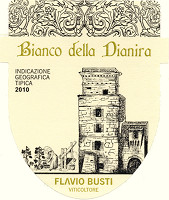
|
|
Bianco della Dianira 2010 |
|
| Flavio Busti (Umbria, Italy) | |
| Grapes: Grechetto, Pinot Gris | |
| Price: € 10.00 | Score: |
| Bianco della Dianira shows a pale straw yellow color and nuances of greenish yellow, very transparent. The nose denotes intense, clean and pleasing aromas which start with hints of apple, plum and hazelnut followed by aromas of hawthorn, broom and pear. The mouth has good correspondence to the nose, a crisp attack and however balanced by alcohol, good body, intense flavors. The finish is persistent with flavors of apple, plum and pear. Bianco della Dianira ferments in cask. | |
| Food Match: Fried fish, Pasta and risotto with fish and crustaceans, Sauteed fish | |
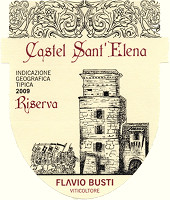
|
|
Castel Sant'Elena Riserva 2009 |
|
| Flavio Busti (Umbria, Italy) | |
| Grapes: Merlot, Cabernet Sauvignon | |
| Price: € 15.00 | Score: |
| Castel Sant'Elena Riserva shows a brilliant ruby red color and nuances of garnet red, moderate transparency. The nose denotes intense, clean, pleasing and refined aromas which start with hints of black cherry, plum and black currant followed by aromas of dried violet, blueberry, vanilla, cocoa, mace and menthol. The mouth has good correspondence to the nose, a tannic attack and however balanced by alcohol, good body, intense flavors, pleasing roundness. The finish is persistent with flavors of black cherry, plum and black currant. Castel Sant'Elena Riserva is made from late harvested grapes and ferments in cask. | |
| Food Match: Roasted meat, Braised and stewed meat with mushrooms, Hard cheese | |
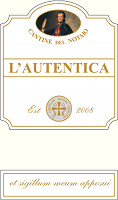
|
|
L'Autentica 2008 |
|
| Cantine del Notaio (Basilicata, Italy) | |
| Grapes: Muscat Blanc (70%), Malvasia Bianca (30%) | |
| Price: € 15.00 | Score: |
| L'Autentica shows an intense amber yellow color and nuances of amber yellow, transparent. The nose reveals intense, clean, pleasing, refined and elegant aromas which start with hints of raisin, dried apricot and lychee followed by aromas of peach jam, pear jam, candied fruits, dried fig, lavender, date, honey, citrus fruit peel, vanilla and nail polish. The mouth has excellent correspondence to the nose, a sweet and round attack, however balanced by alcohol, good body, intense flavors, pleasing crispness. The finish is very persistent with long flavors of raisin, dried apricot and lychee. L'Autentica ages for 14 months in barrique. | |
| Food Match: Hard and piquant cheese, Fruit tarts, Confectionery | |
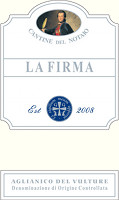
|
|
Aglianico del Vulture La Firma 2008 |
|
| Cantine del Notaio (Basilicata, Italy) | |
| Grapes: Aglianico | |
| Price: € 32.00 | Score: |
| Aglianico del Vulture La Firma shows a deep ruby red color and nuances of ruby red, little transparency. The nose reveals intense, clean, pleasing, refined and elegant aromas which start with hints of blackberry, black cherry and plum followed by aromas of violet, vanilla, raspberry, blueberry, cocoa, leather, mace, pink pepper and menthol. The mouth has good correspondence to the nose, a tannic attack and however balanced by alcohol, full body, intense flavors, pleasing roundness. The finish is very persistent with long flavors of blackberry, plum and black cherry. Aglianico del Vulture La Firma Aglianico del Vulture La Firma ages for 12 months in barrique followed by 12 months of aging in bottle. | |
| Food Match: Game, Roasted meat, Stewed and braised meat, Hard cheese | |
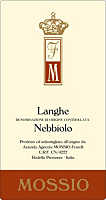
|
|
Langhe Nebbiolo 2007 |
|
| Mossio (Piedmont, Italy) | |
| Grapes: Nebbiolo | |
| Price: € 14.90 | Score: |
| This Langhe Nebbiolo shows an intense ruby red color and nuances of garnet red, moderate transparency. The nose denotes intense, clean, pleasing and refined aromas which start with hints of cherry, plum and violet followed by aromas of blueberry, raspberry, vanilla, chocolate, cinnamon, mace and menthol. The mouth has good correspondence to the nose, a tannic attack and however balanced by alcohol, good body, intense flavors, pleasing crispness. The finish is persistent with flavors of cherry, plum and raspberry. This Langhe Nebbiolo ages for 12 months in cask followed by 2 months of aging in bottle. | |
| Food Match: Roasted meat, Braised and stewed meat with mushrooms, Hard cheese | |
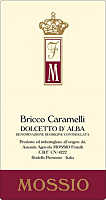
|
|
Dolcetto d'Alba Bricco Caramelli 2010 |
|
| Mossio (Piedmont, Italy) | |
| Grapes: Dolcetto | |
| Price: € 10.00 | Score: |
| Dolcetto d'Alba Bricco Caramelli shows a deep ruby red color and nuances of purple red, little transparency. The nose reveals intense, clean, pleasing, refined and elegant aromas that start with hints of plum, blackberry and black cherry followed by aromas of violet, geranium, raspberry, peach, almond, blueberry, strawberry, cyclamen and anise. The mouth has excellent correspondence to the nose, a tannic attack and however balanced by alcohol, good body, intense flavors, pleasing crispness. The finish is very persistent with long flavors of black cherry, blackberry and plum. Dolcetto d'Alba Bricco Caramelli ages in steel tanks. | |
| Food Match: Cold cuts, Pasta with meat and mushrooms, Roasted white meat, Sauteed meat | |
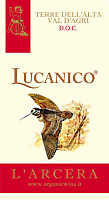
|
|
Terre dell'Alta Val d'Agri Lucanico 2007 |
|
| L'Arcera (Basilicata, Italy) | |
| Grapes: Merlot, Cabernet Sauvignon, Aglianico | |
| Price: € 15.00 | Score: |
| Terre dell'Alta Val d'Agri Lucanico shows an intense ruby red color and nuances of garnet red, little transparency. The nose denotes intense, clean, pleasing and refined aromas which start with hints of plum, blackberry and black currant followed by aromas of dried violet, carob, pink pepper and menthol. The mouth has good correspondence to the nose, a slightly tannic attack and however balanced by alcohol, good body, intense flavors, pleasing roundness. The finish is persistent with flavors of plum, blackberry and black currant. Terre dell'Alta Val d'Agri Lucanico ages in steel tanks. | |
| Food Match: Stuffed pasta, Broiled meat and barbecue, Stewed meat, Hard cheese | |
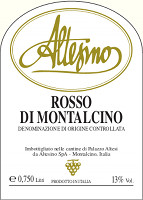
|
|
Rosso di Montalcino 2010 |
|
| Altesino (Tuscany, Italy) | |
| Grapes: Sangiovese | |
| Price: € 15.00 | Score: |
| This Rosso di Montalcino shows a brilliant ruby red color and nuances of ruby red, moderate transparency. The nose denotes intense, clean and pleasing aromas which start with hints of black cherry, plum and violet followed by aromas of blueberry, raspberry, geranium and vanilla. The mouth has good correspondence to the nose, a slightly tannic attack and however balanced by alcohol, good body, intense flavors, pleasing crispness. The finish is persistent with flavors of black cherry, plum and raspberry. This Rosso di Montalcino ages for 7 months in cask followed by 3 months of aging in bottle. | |
| Food Match: Roasted meat, Broiled meat and barbecue, Stewed meat | |
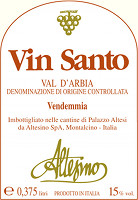
|
|
Val d'Arbia Vin Santo 2001 |
|
| Altesino (Tuscany, Italy) | |
| Grapes: Trebbiano Toscano, Malvasia Bianca | |
| Price: € 18.00 - 375ml | Score: |
| Val d'Arbia Vin Santo shows a dark golden yellow color and nuances of amber yellow, transparent. The nose reveals intense, clean, pleasing, refined and elegant aromas that start with hints of fig jam, raisin and caramel followed by aromas of date, dried apricot, honey, vanilla, citrus fruit peel, walnut husk, almond, leather and nail polish. The mouth has good correspondence to the nose, a sweet and round attack, however balanced by alcohol, good body, intense flavors, pleasing crispness. The finish is persistent with flavors of fig jam, raisin and caramel. Val d'Arbia Vin Santo ages for 7 years in traditional caratelli followed by 4 months of aging in bottle. | |
| Food Match: Piquant cheese, Confectionery, Dried fruit tarts | |
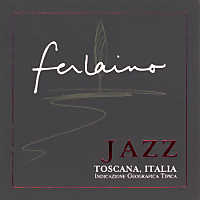
|
|
Jazz 2008 |
|
| Ferlaino (Tuscany, Italy) | |
| Grapes: Merlot (36%), Sangiovese (28%), Cabernet Franc (27%), Petit Verdot (9%) | |
| Price: € 40.00 | Score: |
| Jazz shows an intense ruby red color and nuances of ruby red, little transparency. The nose denotes intense, clean, pleasing and refined aromas that start with hints of black currant, black cherry and plum followed by aromas of violet, blueberry, vanilla, cocoa, mace, menthol and hints of bell pepper. The mouth has good correspondence to the nose, a tannic attack and however balanced by alcohol, good body, intense flavors, agreeable. The finish is persistent with flavors of black currant, black cherry and plum. Jazz ages for 18 months in barrique followed by 6 months of aging in bottle. | |
| Food Match: Roasted meat, Stewed and braised meat, Hard cheese | |
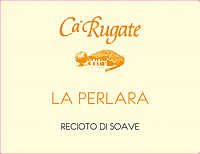
|
|
Recioto di Soave La Perlara 2008 |
|
| Ca' Rugate (Veneto, Italy) | |
| Grapes: Garganega | |
| Price: € 21.20 - 50cl | Score: |
| Recioto di Soave La Perlara shows a brilliant amber yellow color and nuances of amber yellow, transparent. The nose denotes intense, clean, pleasing, refined and elegant aromas which start with hints of raisin, dried apricot and honey followed by aromas of candied fruits, peach jam, quince jam, dried fig, vanilla, lychee, almond, citrus fruit peel and nail polish. The mouth has good correspondence to the nose, a sweet and round attack, however balanced by alcohol, good body, intense flavors, pleasing crispness. The finish is persistent with flavors of raisin, dried apricot and honey. Recioto di Soave La Perlara ages for 12 months in barrique. | |
| Food Match: Hard cheese, Confectionery, Dried fruit tarts | |
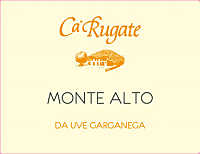
|
|
Soave Classico Monte Alto 2009 |
|
| Ca' Rugate (Veneto, Italy) | |
| Grapes: Garganega | |
| Price: € 9.30 | Score: |
| Soave Classico Monte Alto shows a pale golden yellow color and nuances of straw yellow, very transparent. The nose denotes intense, clean, pleasing, refined and elegant aromas which start with hints of apple, plum and almond followed by aromas of hawthorn, citrus fruits, honey, peach, vanilla, pear, praline, medlar and mineral. The mouth has good correspondence to the nose, a crisp attack and however balanced by alcohol, good body, intense flavors, pleasing roundness. The finish is persistent with flavors of apple, plum and almond. Soave Classico Monte Alto ferments in part in barrique and ages in cask for 8 months. | |
| Food Match: Pasta with mushrooms, Mushroom soups, Stewed and roasted fish, Roasted white meat | |
News |
|
In this section are published news and information about events concerning the world of wine and food. Whoever is interested in publishing this kind of information can send us a mail to our address.
|
AquavitaeReview of Grappa, Distillates and Brandy |
|
|
| Distillates are rated according to DiWineTaste's evaluation method. Please see score legend in the "Wines of the Month" section. |

|
|
Grappa di Sagrantino |
|
| Romanelli (Umbria, Italy) | |
| (Distiller: Distillerie Colessi) | |
| Raw matter: Pomace of Sagrantino | |
| Price: € 18.00 - 500ml | Score: |
| This grappa is limpid, colorless and crystalline. The nose reveals intense, clean and pleasing aromas of blackberry, plum, hazelnut, violet and black cherry, with almost imperceptible alcohol pungency. In the mouth has intense flavors, with perceptible alcohol pungency which tends to dissolve rapidly, good correspondence to the nose, balanced sweetness. The finish is persistent with flavors of blackberry, plum and black cherry. This grappa is distilled in a batch bainmarie alembic still. Alcohol 43%. | |
Wine Parade |
|
|
| The best 15 wines according to DiWineTaste's readers. To express your best three wines send us an E-mail or fill in the form available at our WEB site. |
| Rank | Wine, Producer | |
|---|---|---|
| 1 |
| Brunello di Montalcino Vigneto Manachiara 2005, Tenute Silvio Nardi (Italy) |
| 2 |
| Barolo Cannubi Boschis 2005, Sandrone (Italy) |
| 5 |
| Rosso Conero Riserva Grosso Agontano 2007, Garofoli (Italy) |
| 4 |
| Arkezia Muffo di San Sisto 2004, Fazi Battaglia (Italy) |
| 5 |
| Brunello di Montalcino 2006, Siro Pacenti (Italy) |
| 6 |
| Confini 2007, Lis Neris (Italy) |
| 7 |
| Batàr 2008, Querciabella (Italy) |
| 8 |
| Trento Brut Riserva Methius 2004, Dorigati (Italy) |
| 9 |
| Collio Sauvignon Ronco delle Mele 2010, Venica (Italy) |
| 10 |
| Gran Masetto 2007, Endrizzi (Italy) |
| 11 |
| Aglianico del Vulture Il Repertorio 2006, Cantine del Notaio (Italy) |
| 12 |
| Soave Motto Piane 2008, Fattori (Italy) |
| 13 |
| Franciacorta Pas Dosé Récemment Dégorgé 2006, Cavalleri (Italy) |
| 14 |
| Brunello di Montalcino Progetto Prime Donne 2004, Donatella Cinelli Colombini (Italy) |
| 15 |
| Adarmando 2009, Tabarrini (Italy) |
| |||||||
Privacy Policy | |||||||


| Copyright © 2002-2024 Antonello Biancalana, DiWineTaste - All rights reserved |
| All rights reserved under international copyright conventions. No part of this publication and of this WEB site may be
reproduced or utilized in any form or by any means, electronic or mechanical, without permission in writing from DiWineTaste. |